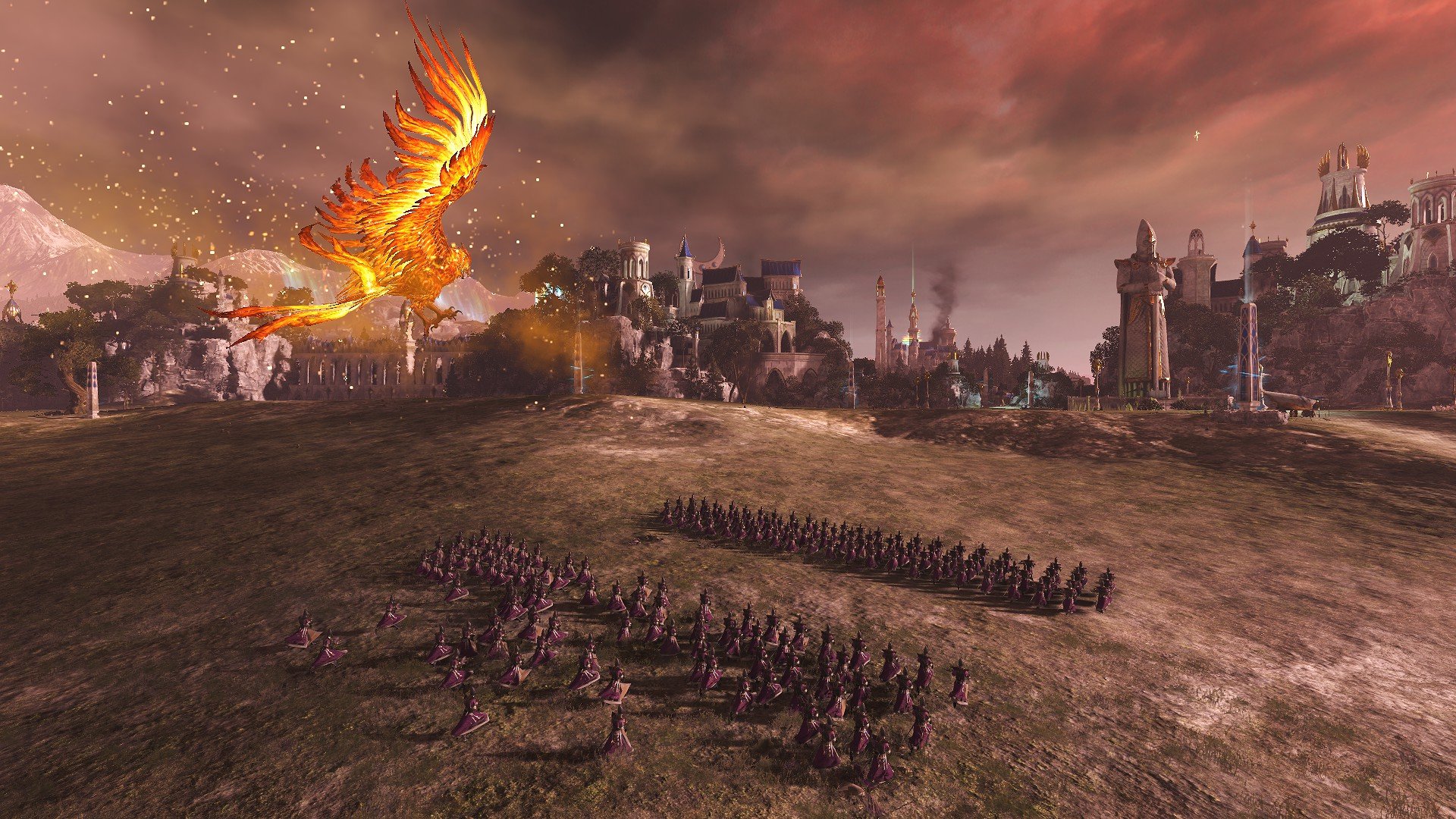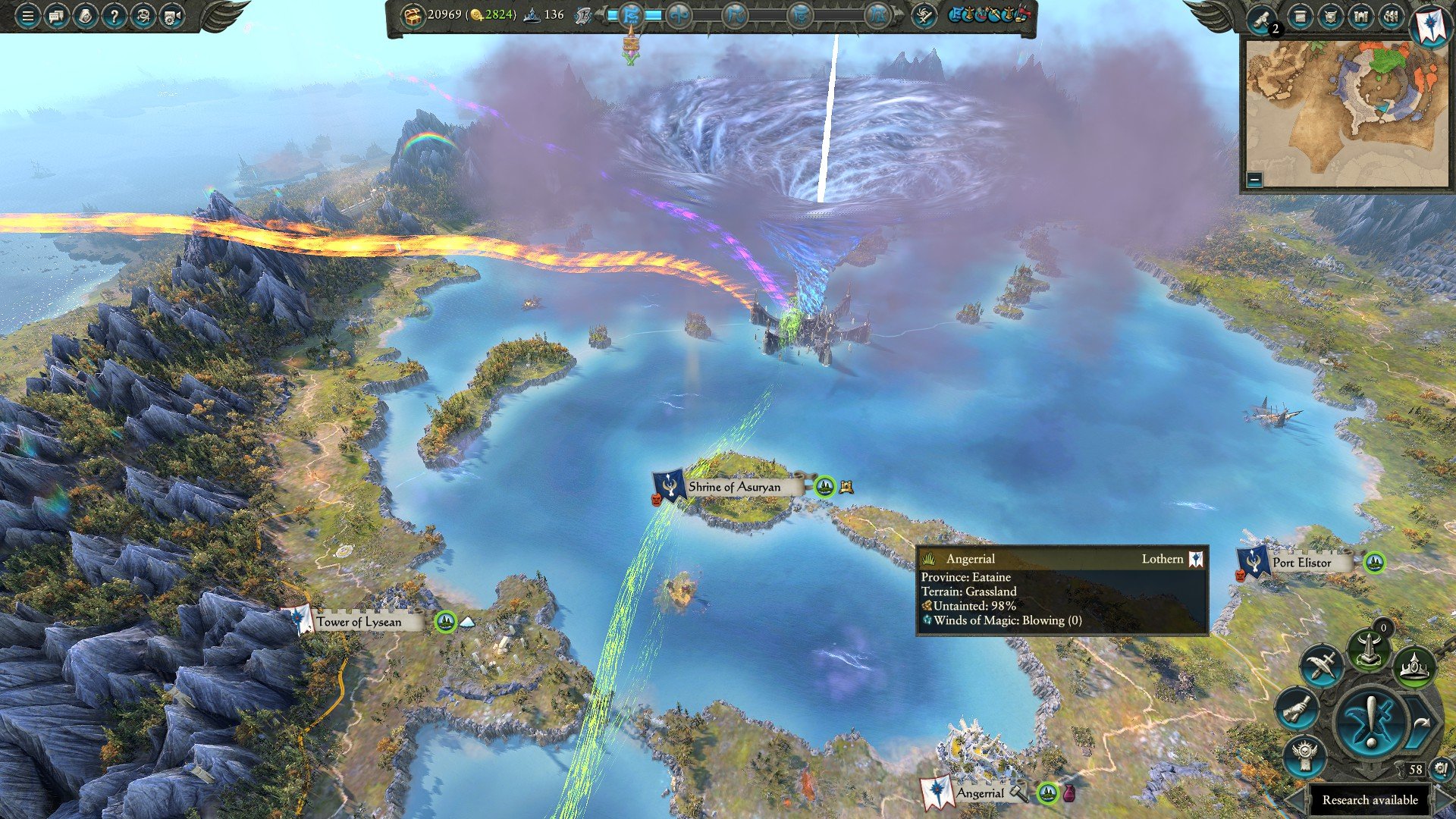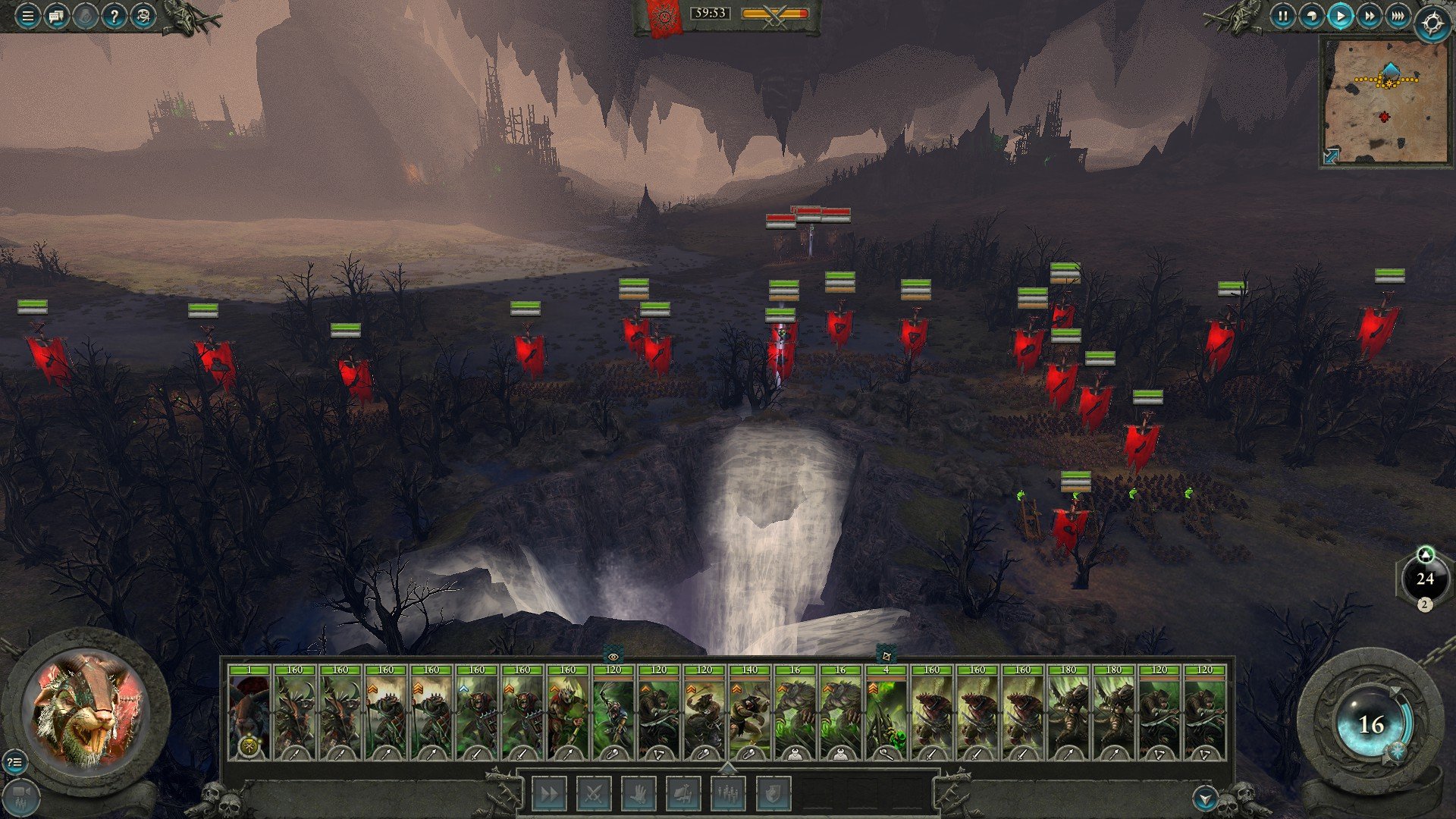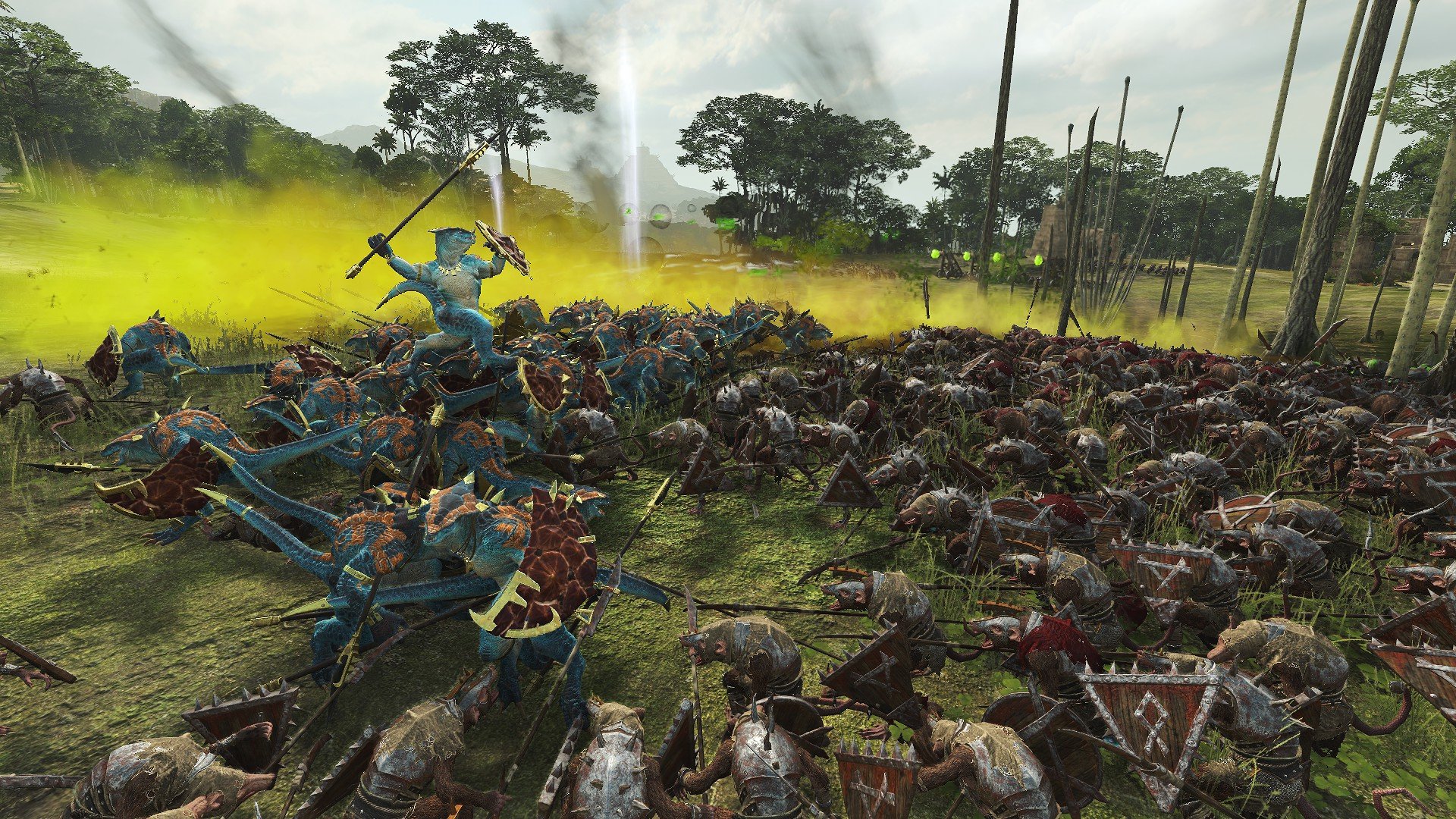Total War: Warhammer II Review
A Magical Vortex for your time and attention
Last year’s Total War: Warhammer represented the series’ first departure from historical settings, a move done successfully and competently but perhaps made with some trepidation. The core Total War formula alongside the highly varied and distinct races made for a good foundation, but some elements both on and off the battlefield that added depth and texture to previous games like Attila were missing or over-simplified, and the added elements seemed a bit too thin to make up for this. Just over one year later, and Creative Assembly have already created a full sequel to this game, and have managed in this short time to refine and improve the entire experience while adding some much needed excitement to the campaign mode. Even though it might seem too soon for a full sequel, the new races and improvements in Total War: Warhammer II make it feel fresh, confident and exciting in a way the first game did not.

In most regards, Warhammer II is functionally the same as its predecessor. There are four different races available at launch, each with very different play styles. The basic components are the same; battles take place as full-on sieges, underground, or out in the field. Naval and settlement battles are again absent, with the former being particularly noticeable in Warhammer II due to the amount of water on the map and sea-travel required. Each faction has its own storyline told through brief but highly effective cutscenes comprised of a camera panning across some really gorgeous art, supported by well written and acted narration. All of these elements existed in the previous Total War: Warhammer, but some small tweaks and one major twist on the usual campaign formula prove invigorating.
The major twist that ends up being the crux of Warhammer II’s success is the presence of a huge magical vortex that the different factions must fight to control in order to achieve victory. In order to control this vortex, factions must perform rituals that take about ten turns to complete. And to perform rituals, you must collect a resource called Warp Stone that can only be mined in a handful of specific territories, which become the focal points of conflict in the campaign. While past Total War games introduced some kind of extra gameplay challenge towards the end of a campaign, such as the Forces of Chaos in the first Warhammer or the Mongolian hordes in Attila, the vortex and the race to perform rituals is present throughout the campaign here.
When you eventually get enough Warp Stone to perform a ritual, three of your cities will be randomly selected as ritual sites, and you must defend them against the Forces of Chaos who are drawn to the rituals. This makes for some great and unpredictable gameplay as you might need to rush armies around to get to the right cities; if an army of Chaos captures one, the ritual will fail unless you re-capture the city before the ritual completes. It is also possible to hire surrogate armies to try and interfere with the rituals of rival factions to slow them down. Eventually, all of this culminates in a final battle that must be won in order to achieve victory. All of these mechanics work very well, and sit on top of the existing typical Total War campaign structure in a way that makes for one of the fastest-paced and most exciting campaigns in series’ history. If you so choose, you can ignore the vortex and rituals and achieve victory via the traditional conquest route, which is a nice option to have and adds further replay value.

Other tweaks are less obvious but add up to improve the experience significantly. Warhammer 1 had some odd limitations about which factions could occupy which settlements that I found to be a thorn in my side rather than an interesting strategic variable, and this limitation has been removed as any faction can now capture and occupy any settlement. The User Interface has been reworked and is now easier to use and understand. You will now be notified before ending your turn of any armies, heroes or significant construction projects that you might have forgotten to deal with during your turn, which is quite helpful given how much you need to think about during your campaign. In many ways, Warhammer II might be the slickest entry in the series since Shogun 2.
Of course, none of this would matter if the factions themselves weren’t interesting and fun to play. The High Elves might be the best faction to start with, as they already have control of the vortex at the start of the game and must perform rituals in order to keep it that way. On the battlefield, the High Elves are the closest thing to a traditional Total War faction, with relatively small and expensive but tough units that mostly feel like they could have been in one of the historically themed games, with the notable twist of being able to use magic. High Elf armies are most effective at fighting towards the start of a battle, and units will gain bonuses while at or near full strength. The real power of the High Elves is in their finesse in diplomacy and trade. They can accumulate Influence points by various means which can be used to quietly increase their relations with other factions in order to get trade agreements, military alliances or even confederations where you can absorb a less powerful faction into your own.
As if to differentiate the seemingly similar Dark Elves, this faction’s armies will fight with more zeal as battles go on and more enemies are killed. They also have the unique ability to use slaves for an economy boost at the cost of public order, and build Black Arks, huge ships that can reinforce armies anywhere and provide naval bombardments for land battles, though this faction’s sea-faring advantages only highlights the absence of naval battles. The armies of the Lizard Men can also become more effective as battles go on, as this faction’s numerous monstrous, dinosaur-like units will go berserk and start attacking enemies at random, meaning they cannot be controlled, but also that they will fight to the death without breaking.

The Skaven feel like the most complex race, but they also ended up being my favorite to play. This faction’s settlements are underground, meaning they cannot be detected by other factions unless scouted directly. Perhaps more prominent is the need to manage food supplies, a resource that has otherwise been absent in the Total War Warhammer series. The primary way in which the Skaven must acquire food is by eating their enemies, meaning you need to consistently win battles in order to obtain enough of this valuable resource. Having a surplus of food grants faction-wide bonuses, while a food shortage will have a negative impact on public order growth in your provinces. The larger your empire becomes, the more food you will need. Managing food, money and Warp Stone proves a tricky balancing act that should appeal to Total War veterans looking for a challenge. On the battlefield, the Skaven rely on numbers as their units are generally weak and will break easily. Additional weak units can be brought onto the battlefield through tunnels; watching a swarm of dog-sized rats come pouring out of a hole into some harassing archers who thought they were safe from the heat of battle never got old for me.
The battles in Warhammer II are enjoyable thanks to the generally clever AI and myriad interesting units and abilities on offer, but I still really missed the settlement battles from Rome 2 and Attila. The vast majority of battles will be fought in open terrain, with occasional forests and bottlenecks offering some much needed variety. Siege battles remain challenging, spectacular and entertaining but haven’t really evolved. Quest battles return from Warhammer 1, and are probably the most enjoyable conflicts in the game thanks to their more elaborate, scripted nature. You might have to defend a ridge against enemies coming from both sides, or hold out against a huge force until reinforced. My only issue with these is that there aren’t more of them.
The usual set of multiplayer options are present and work well, with co-op and competitive campaigns, as well as custom and competitive battles rounding out the robust but now expected offerings. You can now fast-forward through enemy turns if you so desire which can help reduce down-time when playing co-op campaigns in particular. Sometime in the future Creative Assembly are going to release an update for owners of both Total War: Warhammer games that will combine the maps and factions of both games into a super-campaign which is certainly an exciting prospect, though this is not yet present. It seems the developers are focusing on improving and polishing existing features rather than trying to add new ones which is probably for the best given the series history with technical issues.

In this arena, Warhammer II is in pretty good shape but perhaps not quite as polished as its predecessor. I ran into some issues with the frame rate struggling and the user interface becoming unresponsive on the campaign map, especially later in the campaigns when a lot of the map was visible. Sometimes units might not respond to orders as quickly as you might like during battles, and I observed enemy units sometimes running around in a ridiculous looking manner on a couple of occasions as if they couldn’t decide what to do. Still, these issues were infrequent and didn’t detract much from the overall experience.
While it seemed like Creative Assembly had to tone down some of the visual fidelity for Total War: Warhammer to accommodate for the extra magical effects that come with the fantasy setting, things have been improved again here. The game looks very sharp, with storms rolling over the ocean on the campaign map and battles looking absolutely spectacular. The original score is outstanding, with excellent use of stringed instruments in particular to heighten the tension of the campaign.
Just as Creative Assembly refined Rome 2 into Attila, they have done the same with Warhammer II, learning from their mistakes and crafting another outstanding strategy game. Even though I still miss some of the more diverse battle types seen in previous games in the series, the more exciting campaign and host of tweaks and refinements push this sequel into the highest tier of Total War entries. As someone who is relatively indifferent towards the Warhammer universe and was not fully grabbed by the first game, I was fully engaged by the sequel and wouldn’t hesitate to recommend it to any fan of Total War, or strategy games in general.
 Comments
Comments



















